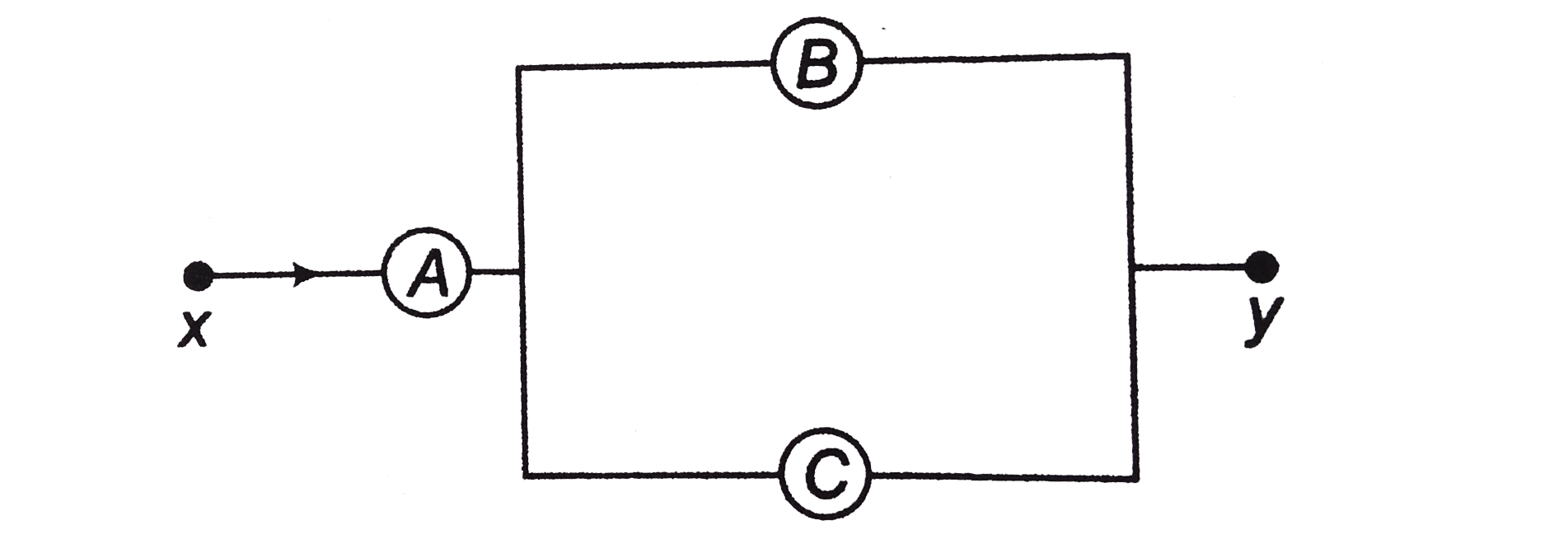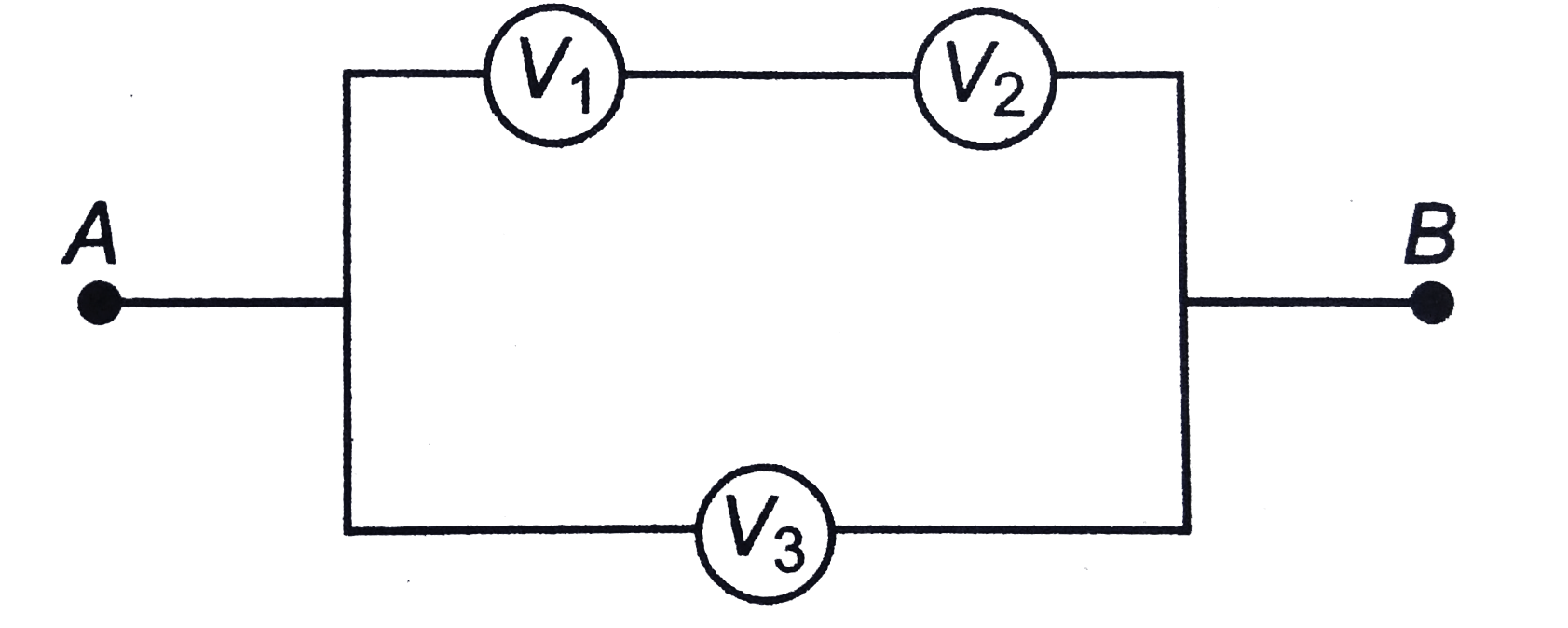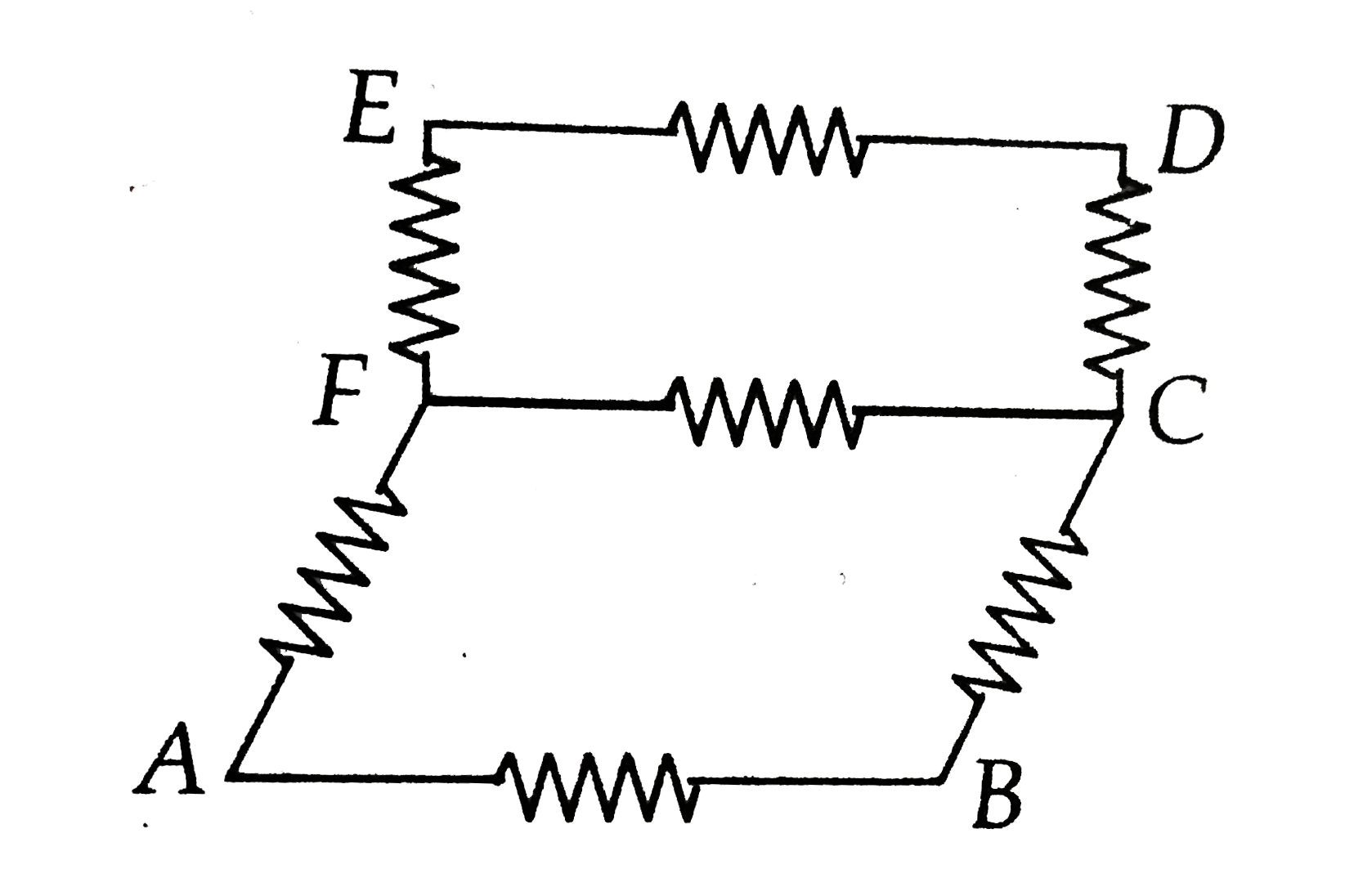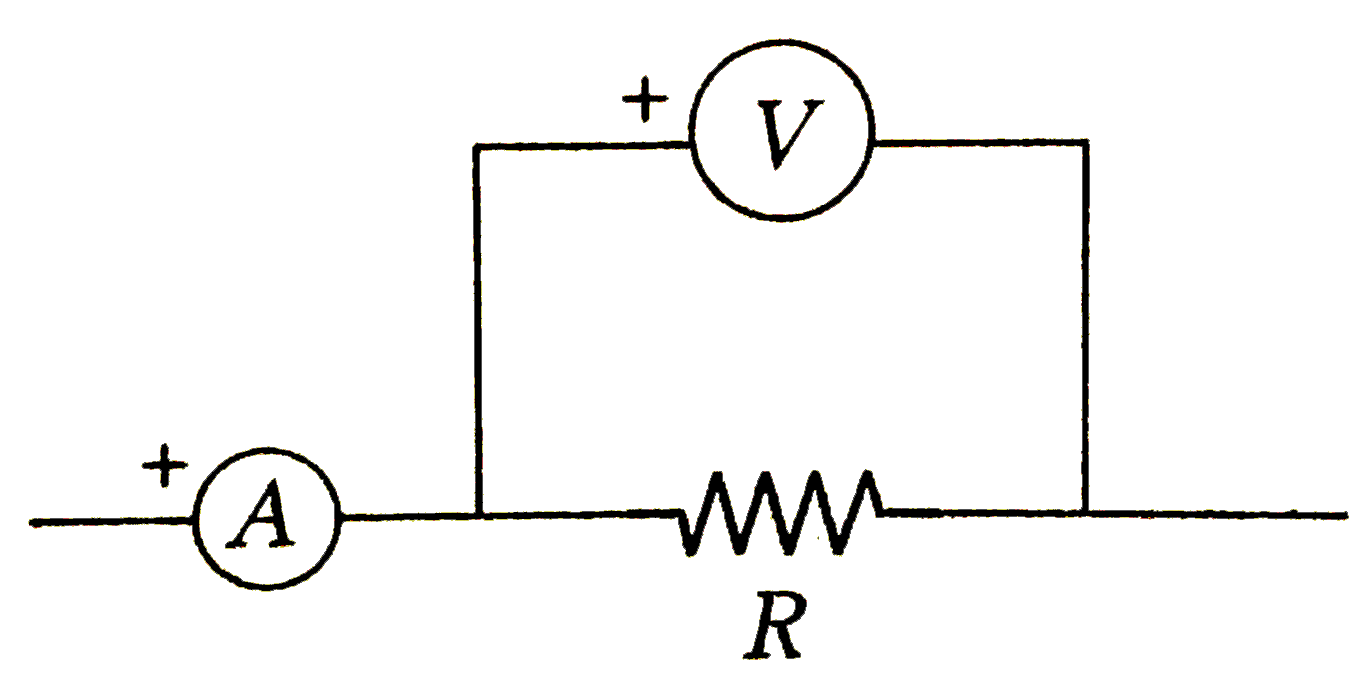A,B and C are voltmeters of resistances R,1.5R and 3R respectively. When some potential difference is applied between x and y the voltmeter readings are VA,VBand VC, then

VA≠VB=VC
VA=VB≠VC
VA≠VB≠VC
VA=VB=VC
The correct Answer is:D
As B and C are connnected in parallel so effective resistance of B and C (1.5)(3R))1.5R+R+3R=R
for series combination V∝R
so voltage acros A = voltage across B and C now B and C parellal VB=VC
Hence VA=VB=VC
Topper's Solved these Questions
- CURRENT ELECTRICITYBOOK - PRADEEPCHAPTER - CURRENT ELECTRICITYEXERCISE - Jee (main and advance)
4 Videos
- CURRENT ELECTRICITYBOOK - PRADEEPCHAPTER - CURRENT ELECTRICITYEXERCISE - Interger Type
2 Videos
- CURRENT ELECTRICITYBOOK - PRADEEPCHAPTER - CURRENT ELECTRICITYEXERCISE - Value based
2 Videos
- COMMUNICATION SYSTEMSBOOK - PRADEEPCHAPTER - COMMUNICATION SYSTEMSEXERCISE - MODEL TEST PAPER-2
9 Videos
- DUAL NATURE OF RADIATION AND MATTERBOOK - PRADEEPCHAPTER - DUAL NATURE OF RADIATION AND MATTEREXERCISE - Exercise
191 Videos
Similar Questions
Three voltmeters A, B and C having resistances R, 1.5 R and 3 R respectively are used in a circuit as shown. When a potential difference is applied between X and Y, the readings of the voltmeters are V1,V2andV3respectively. Then :

View SolutionAn ammeter and a voltmeter of resistance R are connected in series to an electric cell of negligible internal resistance . Their readings are A and V respectively. If another resistance R is connected in parallel with the voltmeter , then
View Solution
Knowledge Check
A,B and C are voltmeters of resistance R, 1.5 R and 3R respectively as shown in the figure. When some potential difference is applied between X and Y, the voltmeter reading are VA,VBandVC respectively.
AVA=AB≠VCBVA≠VB≠VCCVA=AB=VCDVA≠VB=VCThree voltmeters A, B and C having resistances R, 1.5 R and 3 R respectively are used in a circuit as shown. When a potential difference is applied between X and Y, the readings of the voltmeters are V1,V2andV3respectively. Then :
 AV1=V2=V3BV1<V2=V3CV1>V2>V3DV1>V2=V3
AV1=V2=V3BV1<V2=V3CV1>V2>V3DV1>V2=V3Three voltmeters all having different resistance, are joined as shown. When some potential difference is applied acros A and B, their readings are V1,V2 and V3. Then
 AV1=V2BV1≠V2CV1+V2=V3DV1+V2>V3
AV1=V2BV1≠V2CV1+V2=V3DV1+V2>V3
If the potential difference between A and D is V, what will be potential difference between F and C. each of the resistance is R.

View SolutionAn ammeter A, a voltmeter V and a resistance R are connected as shown in the figure. If the voltmeter reading is 1.6V and the ammeter reading is 0.4A, then R is

View SolutionAn ammeter and a voltmeter of resistance R are connected in series to an electric cell of negligible internal resistance . Their readings are A and V respectively. If another resistance R is connected in parallel with the voltmeter , then
View SolutionA 100 V voltmeter of internal resistance 20kΩ n series with a high resistance R is connected to 110 V line. The voltmeter reads 5V, the value of R is -
View SolutionAn ammeter and a voltmeter of resistance R are connected in series to an electric cell of negligible internal resistance . Their readings are A and V respectively. If another resistance R is connected in parallel with the voltmeter , then
View Solution
